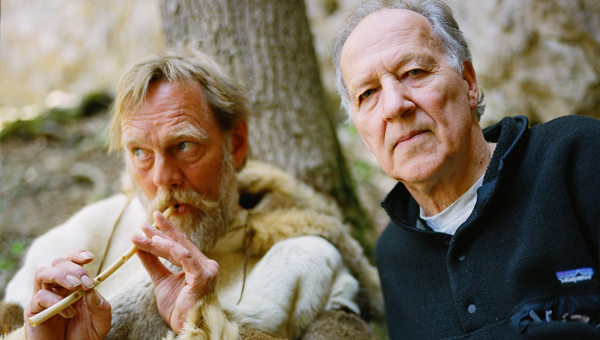Cave Of Forgotten Dreams DVD Review

From the opening scene, you know Cave Of Forgotten Dreams is going to look good.
The film opens with an aerial shot of the Ardeche Gauge, a place I know all too well. I remember a school canoeing trip to the gauge, where our appropriate adults lured us inside with the promise of seeing something quite incredible.
I know what you’re thinking, but luckily for me our school wasn’t like that. The number of child abuse cases was well below the national average, especially when compared to the catholic schools in the area.
Besides, that Tom Harris kid was asking for it.
No, the incredible sight was a 14ft drop into the Ardeche River that they wanted us to freefall from. Being petrified of heights, I’d have gladly volunteered myself as the next Tom to get out of this.
And told my carers as much.
Alas, I wasn’t their type so instead dropped like a starfish into the river below.
It was this memory that consumed me for the first few seconds of Werner Herzog’s Cave Of Forgotten Dreams.
Herzog’s latest oeuvre tells the story of the Chauvet Cave in Southern France, an elaborate series of underground caverns discovered in 1994 that had previously been hidden from sight by a prehistoric landslide. Within these caves lay the perfectly preserved paintings drawn by primitive man dating back some 5000 years.
And these paintings are beautiful.
Even more so when we’re told the cave would not have been lit, so these images would have been painted in the dark.
The film is written, produced and directed by the notoriously eccentric Herzog, whose reputation for being difficult is the stuff of legend. But here, deep in the Chauvet Cave, he is something of a poet.
Herzog’s voice is calm and emotionless, with facts cutting through nigh on every scene and illustrating his passion for this new discovery. His thought provoking narration illuminates the lives of the artists who created them, but Herzog is also hilarious.
At one point he asks a bemused archaeologist if he thought phone books cry.
And it’s not just Herzog’s sanity that seems to have been consumed by the enthusiasm for their vocation.
Cave Of Forgotten Dreams is awash with eccentric experts, one of whom demonstrates his affinity for primal man by dressing head to toe in reindeer skin before playing the American national anthem on a flute made of bone.
The paintings themselves consist entirely of animal drawings and are incredibly life like. These early artists clearly had an eye for detail, with one image depicting a group of horses stampeding towards you.
The painting is so real; you can almost feel the roar of the wild steeds as they charge. Or rather you could, if it wasn’t for Herzog’s incessant chat.
You see this is his film, and he has his hand in every little detail. There’s a lovely sequence of still black and white shots of the paintings, with various experts standing in front of them; the gloom of the cave brightened by the paintings and these fascinated faces peering up at them.
It’s more than enough to keep any audiences attention, but Herzog elects to dub the sound of a heartbeat over this to symbolise something that’s quite lost on me.
And this is the problem I had with Cave Of Forgotten Dreams.
Herzog’s excitement for what he has found is obvious, and he wants us to feel as enthused as he. But he appears unconvinced we’ll get it on our own, so heavy-handedly layers supposedly moving music and all manner of other stock sound effects over most every scene.
These paintings are intricate, beautiful and inspiring; they don’t need to be artificially enhanced. Herzog’s attempts only end up cheapening the glorious splendour of the film.
The maverick director even uses 3D cameras to make these paintings come alive. There are isolated moments when this footage works, but the majority of these 3D scenes are too grainy for the viewer to feel like they’re actually in the cave.
The best part of Cave Of Forgotten Dreams comes towards the end; when Herzog finally stops his talking and cosmetic tinkering and shows the audience paintings, one after another.
If he’d backed off a little and let these drawings speak for themselves, allowing the viewer to absorb the images in their own way, Herzog would have done the art and the artist’s far greater justice.
As it is, Cave Of Forgotten Dreams is as much about the director as it is the paintings.
And try as he might, Herzog isn’t nearly as interesting.
Tim Green